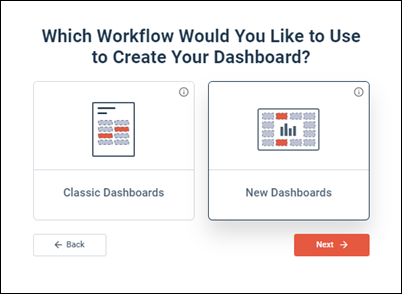Choosing between New Dashboards and Classic Dashboards
Determine whether you should select New Dashboards or Classic Dashboards depending on your requirements. New Dashboards are the best choice in most situations.

New Dashboard features
New Dashboards provide a streamlined workflow for selecting data when you create or edit your dashboard and provide access to real-time data in your completed dashboard.
The main features include:
- Supports modifying data sources and user-defined fields at any time.
- Supports an unlimited number of Surveys and Profile Variables.
- Supports selecting both single response and multiple response surveys for a single dashboard.
- Supports any combination of Surveys, Touchpoint activities, profile variables, and custom data sources in a single dashboard.
- Dramatically improved performance compared to Classic Dashboards when loading data sources.
Classic Dashboard features and limitations
The main features include:
- Supports a complete set of features based on datasets. You can add custom fields, mapping fields, and scalar fields.
- Supports predefined templates for Touchpoint Responses, Net Promoter Score, and Text Analytics that allow you to quickly create a dashboard with autogenerated visualization tiles.
The main limitations include:
- Performance may be slow when importing large amounts or activity data into datasets.
- The structure of the dataset cannot be changed after you sync the dataset. This contrasts with New Dashboards, which allow you to add or remove data sources at any time.
- Cannot combine single response and multiple response surveys in a single dashboard.